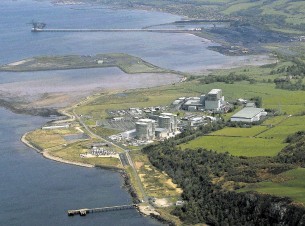
The decision by RWE and E.ON to pull the plug on nuclear new-build in the UK is a product of German politics and priorities. However, it raises serious issues for energy policy that need to be addressed with some urgency.
In the wake of Fukishima, the German government decided to phase out the use of nuclear power, throwing its utility giants into disarray. Their investment priority is to adapt to that new domestic reality rather than engage in grand external expansion.
While the nuclear new-build programme in England and Wales can just about withstand the loss of the Germans, the warning signal is there for all to see. Unless there is greater clarity and certainty about the shape of Britain’s future energy mix, the market will make its own decisions, regardless of political priorities.
The particular problem with nuclear new-build is the long time-lag between investment decisions and power generation. Even if consents were given today, it would be well into the next decade before any revenue is being earned. And a lot can change within that time-frame.
It is tempting, particularly in Scotland, to assume that bad news for nuclear is good news for renewables but that is wildly over-simplistic. For anyone whose priority is the carbon reduction objective, nuclear and renewables should be seen as partners rather than opponents. The realistic alternative to nuclear is the expanded use of fossil fuels for the provision of baseload.
Most seriously, the market will continue to promote the use of gas for the generation of electricity. This is neither environmentally sound nor very clever from a security of supply perspective since, increasingly, gas is imported rather than drawn from the North Sea.
Then there is the issue that, 20 years from now, Russia will dominate that market to a much greater extent than it does today. Do we really want that?
In Scotland, we see Scottish Power switching Cockenzie from coal to gas firing. The same thing could happen at Longannet. Add in Peterhead – with or without CCS – and Scotland, like the rest of the UK, could within a few years, be heavily dependent on imported gas, subject to volatile price fluctuations, for our domestically-generated baseload electricity.
Before nuclear investment takes place, there will need to be some guarantees about security of demand once the new stations come on-stream. That is what the Coalition Government’s Energy Market Reforms are supposed to deliver. Interestingly, however, the Germans complained that the current proposals are exacerbating uncertainty rather than resolving it.
In part, this flows from the Liberal Democrat ambivalence towards nuclear new-build. Ostensibly, they have reluctantly bought into it. However, their new mantra has become “no subsidy” – a term which can be used to exclude almost any form of reasonable guarantees that might be expected by the companies involved in the nuclear plans. The Energy Market Reforms need to be finalised and to create the confidence that will encourage all forms of low-carbon generation.
There are so far no signs of the French following the Germans into retreat and EDF is pressing ahead with plans for a Hinkley Point C, the first in the next generation of nuclear new-build.
The existing stations there are due to close by 2016 – the same as Hunterston B – and all will be dependent on the nuclear regulators giving life extensions if there is not to be a huge hiatus in power generation.
By 2023, when Torness is due to close, there could be only Sizewell B left of the current 17-strong nuclear fleet which contributes around 20% of the UK’s electricity. The reality is that power stations using fossil fuels rather than renewables will be the principal short-term beneficiaries of this upheaval in the generation supply structure.
Indeed, this is already happening. Coal-fired power stations continue to be the main fall-back when baseload capacity comes under strain and, throughout the UK, they are running at 75% of capacity compared to 25% a year ago. Coal gradually giving way to gas may be an improvement from an environmental point of view, but they are still both fossil fuels.
Scotland may pretend to be outside the nuclear debate by vetoing replacements for Hunterston B and Torness. In reality, we are going to be heavily nuclear-dependent for at least the next decade and, thereafter, our security of supply considerations will be exactly the same as for the rest of the UK. If nuclear from south of the border does not provide a share of our baseload, our dependence on fossil fuels will increase. So much for “100% renewables”!
I continue to believe that the best strategy for both Scotland and the UK as a whole lies in a balanced energy policy – coal, gas, nuclear and renewables. If we let any one of these become too dominant or to be written out of the script, then more problems will be created than will be resolved. But the market does not deal in such finesse so that governments must, in the wider public interest, keep it in check.
Most of the public debate in Scotland surrounds renewables and, occasionally, nuclear. But actually, it is our attitude towards the use of gas, where it is going to come from in the future, and at what cost, that is due for some overdue debate since the way things are going, we are all going to be relying on it.
Recommended for you
